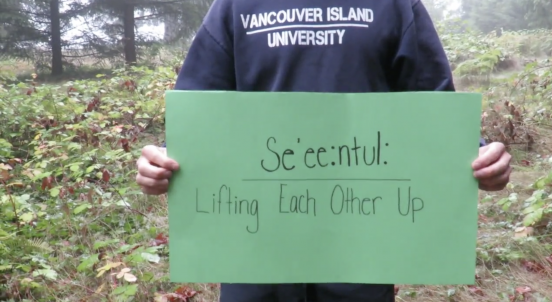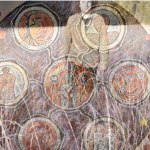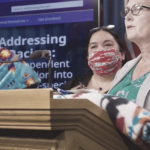This spoken letters assignment has been very inspiring and enjoyable for me as I was able send a personal message to residential school survivors. The making of my spoken letter was very fun and meaningful. All the photos and videos that you see throughout the short film are all video and photos that I have personally taken. I thought that being able to use my own photos and video would allow my work to be more personal and meaningful to the survivors. All of my video clips are taken around Nanaimo, BC, which is on the traditional land of Snuneymuxw First Nations; I am honoured to be able to learn on this beautiful land. Even though this project was enjoyable, I was experiencing a lot of emotion while trying to make my spoken letter. This subject is never easy to talk and think about. Every time I would work on this project I had to face the horrific acts that happened to these people and families. I hope my spoken letter it able to make some smile. This project was not easy but I am honoured to have a project be ‘non-disposable’.
Reasoning for the film
Nature: I used a lot of nature clips because I have learned about the important connection Indigenous culture has with the land. The land is very important for life and should be treated with respect. I believe that nature is able to help soothe and heal the soul which is why I added nature footage into my spoken letter. I hope that the images of nature were able to keep the survivors calm during watching the presentation as I can image they must be experiencing lots of emotions.
Drumming Song: I chose to use drumming as the background music because music is generally seen as an integral part of the daily life and spiritual beliefs for Indigenous peoples. This song is called the Prayer Song which I thought was best suited for the survivors of residential school. The drum represents the voice of the Creator. It speaks of a balance with the natural world. This song is a Coast Salish song. In this specific clip, the song is sung by the Quw utsun Tzinquaw boys who live in Duncan, BC. While the video is being watched by residential school survivors, their friends, and family I hope the song sends good prayers their way and that the creator is looking over them while they watch my spoken letter. The original link can be found below:
Poster Board and Hearts: This was my favourite part of the assignment. Over the last few years I have taught my friends, family, and people around me the history of residential schools and the impact it has on Indigenous peoples. This has been one way that I am able to contribute to reconciliation as I am able to educate others on residential school history which allows them to spread their knowledge to others. My close friends and family all wrote down words and their names to acknowledge all the residential school survivors. This poster board represents that all of us (my friends and family)are aware of the history and we want to see change in Canada. The survivors will not be forgotten.
Photos of me and Children: I added two photos that I had taken on Penelekut Island, home to the Penelakut First Nations. These photos are from one of the communities that I volunteer and coach soccer in. I wanted to added these to my spoken letter to share with the survivors one way I am helping build healthy relationships with Indigenous communities. I hope that these photos bring appreciation and smiles to the survivors faces.
Final Poem: I ended with a final poem by Napoleon Hill that said:
“The strongest oak of the forest is not the one that is protected from the storm and hidden from the sun. It’s the one that stands in the open where it is compelled to struggle for its existence against the winds and rain and the scorching sun”
I ended my spoken letter with this quote as I wanted to acknowledge all of the survivor’s resilience. The poem also recognizes the extreme adversity these survivors have gone through. The survivors are the “oaks” that reflect their ability to overcome adversity and show resilience.
Sarah Georgica





